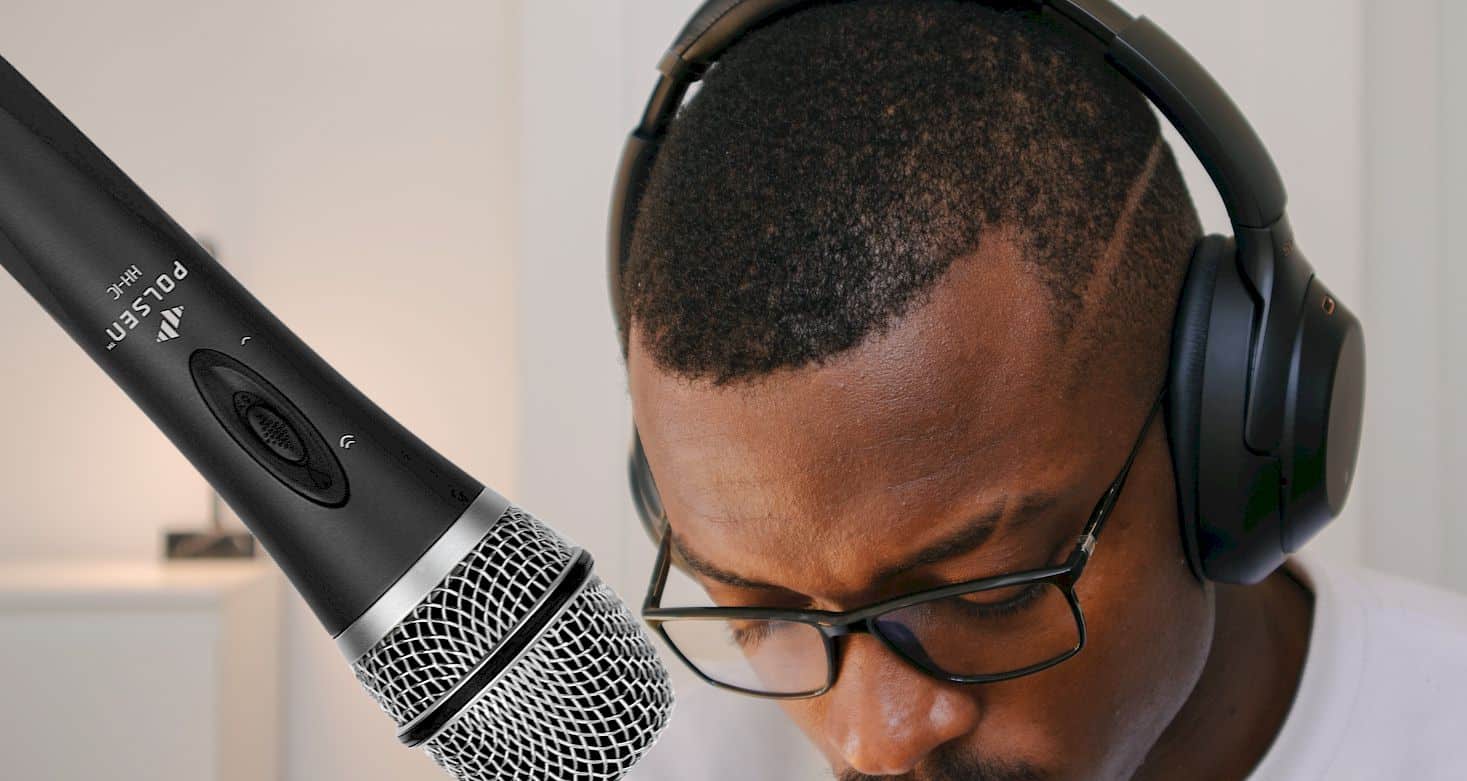As a recording engineer- amateur or professional, you know how vital condenser microphones are to recording a song, podcast, or any other form of recording that requires the role of voices in it.
So, you invested in getting a good condenser microphone that professional sound engineers recommend. At first, everything goes down well with recording with the microphone. However, you playback the recording, and you realize that the microphone barely picked the voices.
You try again and again, but your efforts seem futile. Well, you don’t have to be broken-hearted. The quiet microphone problem happens to the best of us.
And you’re in luck because we’ll examine the possible causes of the microphone issue. We won’t leave you hanging as we’ll also dive into the possible solutions for the microphone problem. Stay tuned; keep reading.
Contents
Reasons Why the Microphone is too quiet
There are several reasons why your microphone sounds quiet. One after the other, we’ll explore these reasons. Let’s dive in.
The Mic is Faulty:
Certain parts are sensitive yet important when it comes to the condenser microphones. One such part is the diaphragm. The state of your microphone’s diaphragm is quite essential. If damaged, it would banish the microphone into silence.
Other parts could affect the microphone’s volume if they get damaged. So, the first thing you want to do when you realize the microphone didn’t pick any audio is to inspect it for damage. An easy way to conduct a mic inspection is to check the frequency response of the microphone.
Does it compare to the regular frequency that you’ve known it to have? If you’re confident that nothing’s wrong with the diaphragm, do a general visual inspection of the microphone. It will help you confirm if other parts of the microphone are faulty as well.
Related: Rode NT1-A Review. A Cardioid Condenser Microphone Package
Low Gain Input:
Aside from the microphone being faulty, the gain input could be below. You see, microphones generally do not produce high-audio signals. Hence, preamps were created to boost the audio signals you’d get from a microphone.
So, a microphone that is connected to a preamp becomes amplified. However, there are now built-in preamps, preamps used to be standalone. Also, the preamp determined the gain level. In other words, the gain/voltage increases or decreases based on the preamp.
In case you’re wondering what gain means, it is how far the audio signal is boosted. Now, your microphone would be quiet if the gain on your preamp (standalone or built-in) is low.
You’re too Distant from the Microphone:
Another common reason your microphone is low or quiet is possible is because you or your guest stood too far away from the microphone. Hence, it made it difficult for the microphone to pick any of the recorded voices.
Microphones can be sensitive too. If you stand more than 20inch from the microphone, it would have a hard time picking your voice. It would record the surrounding noises instead. One microphone etiquette you need to adhere to is to quit moving around while recording your voice via the microphone.
When there’s too much movement, your recording efforts would be futile as you’ll hear more of the surrounding noise. So, a simple way to get through the issue of your microphone being quiet is to stand not further than 20inches away from the microphone while you sing into it. Also, quite moving while you’re recording into the microphone.
Related: Bonaok karaoke microphone review
Microphone Position:
Sometimes, the distance you or your singer/ podcaster maintained from the microphone is perfect. It isn’t more than 12inches. In this case, you might want to check if you’ve got the positioning of the microphone right.
Sometimes, while setting up your microphone, you might get confused regarding which side is the right-side-up and which part isn’t. hence, you tend to mix it all up. After purchasing the mic, you should go through the manual so you’ll know which part of the microphone should be the right side up.
The microphone itself:
In cases like this, amateurs or beginner sound engineers might be vulnerable because your microphone is quiet. Here’s why. As a new sound engineer, you might think that all microphones would give similar results in a different situation.
For instance, you fell in love with a live performance mic at a concert, and you love what it sounded like. While the live performance mic might be good, you want to ensure that you only invest your money if you do more live performances.
However, for studio recording, a condenser mic works fine. But when you attempt to do a studio recording session, you shouldn’t use a live performance mic. If you notice that your microphone is really quiet, maybe you should check if it’s a condenser mic in the first instance.
Wrong Microphone Input:
When connecting your microphone to your audio interface or mixer, you’ll notice there are usually three significant inputs on either equipment.
These inputs include the mic level input that projects and is designed for microphones; the instrument level inputs receive signals from musical instruments, acoustic or electronic, etc. the third input is the line-level input.
This input receives preamplified signals. If you insert your microphone into the line-level microphone or the instrument input, your microphone won’t pick up any signal because you inserted it into the wrong port.
No Phantom Power Supplier for your Microphone:
While other types of Microphones like the Dynamic Microphone do not require a power source to work, condenser mics do.
So, if you’re pondering on the question, “can you use a condenser mic without phantom power” the straight answer is no. Condenser mics require the use of phantom power of about 40 volts.
Without a solid condenser mic phantom power, your microphone would stay quiet all through me.
How to fix when the microphone is too quiet
Once you sort out the problem, you won’t have a hard time fixing a quiet mic. The solution(s) to fixing a low microphone is to tackle it based on the problem. You’ll understand what I mean as I tackle it.
Increase the Volume:
For starters, you want to check the volume of your microphone before you proceed into troubleshooting the quiet microphone problem in a complex way.
When you connect the mic, it’s possible that Windows 10 automatically turned down the volume. When this happens, rather than panic, head over to the volume settings on windows 10. Check the volume level of the microphone before you start recording.
If the volume is low, that might be the reason your mic is too quiet. What you need to do is correct the volume error. Increase and set the volume to the desired level, and you’re good to go. Try to record again and watch your Mic work if the volume was the problem.
Check the Cable Connection:
Sometimes, you might be in a rush. Hence, you’ll connect the microphone to your audio interface or mixer via the cable into the wrong input. That happens. Now, you’ve recorded a session, but you can’t hear the voices you recorded during playback; no thanks for plugging the microphone into the wrong input.
But don’t worry, you can rectify it. All you need to do is check the input you connected the microphone to. Did you plug it into the line-level input or the instrument input?
Either way, plugging your mic into either of the two inputs is wrong. Now, you want to unplug and plug it into the microphone input. Once this is done, it should solve the quiet microphone input.
Adjust your distance to the Microphone:
If you notice that your distance to the microphone is the reason your microphone is quiet, you should adjust your position from the microphone. First, you have to be confident that the distance is the issue.
An easy way to figure that out is to listen to the playback of the recording. Did the microphone pick the surrounding noise and thin out the voice of your singers? Yes? Then, when repeating the recording session, you should coach the singers, etc., on where to stand.
Enlighten them about the microphone ethics that require singers or vocalists to stand nothing less than 6- 12 inches away from the microphone. That’s the perfect distance if you’ll capture their voices.
Change the Phantom Power supplier:
Now, this is another crucial factor that affects the value your microphone gives. For starters, if you do not have phantom power for the condenser mic, we forgive you.
The reason? Unlike dynamic mics, you probably had no idea that you can’t operate your condenser mic without phantom power. So, hopefully, you might have been too used to the dynamic mic. Anyway, the solution to this is to get yourself a phantom power for your condenser mic.
When shopping for a phantom power supply, ensure that you get a 48V phantom power supply. Any voltage below 48 would be an absolute waste of money.
Get an audio interface with a built-in phantom power supply if you do not have the budget for a solid 48V phantom power supply. Viola! You’re good to go.
Wrap Up
While trying out all the tips in this article would work, these tips don’t take the place of having a standard and solid condenser mic. With a high-quality condenser microphone coupled with solid knowledge of your field, you’ll most rarely experience the microphone quiet problem. If you do, it will result from trivial, less severe issues as you forgetting to turn up the volume or your singers, podcasters not sitting too far or too close to the microphone. So, the next time you encounter any problem related to the volume of your condenser microphone, you should know how to troubleshoot based on the information we’ve given you. Good luck!

HI, John Andrew here. I’ve been an audiophile since I was a little kid. I’m an original member of myaudiolover . It emerged as a way for me to share my passion and knowledge for audio technology. If you’re looking for tips, techniques, and insights about audio-tech, that can enable your productions that professional edge, then MyAudioLover is the place for you!

